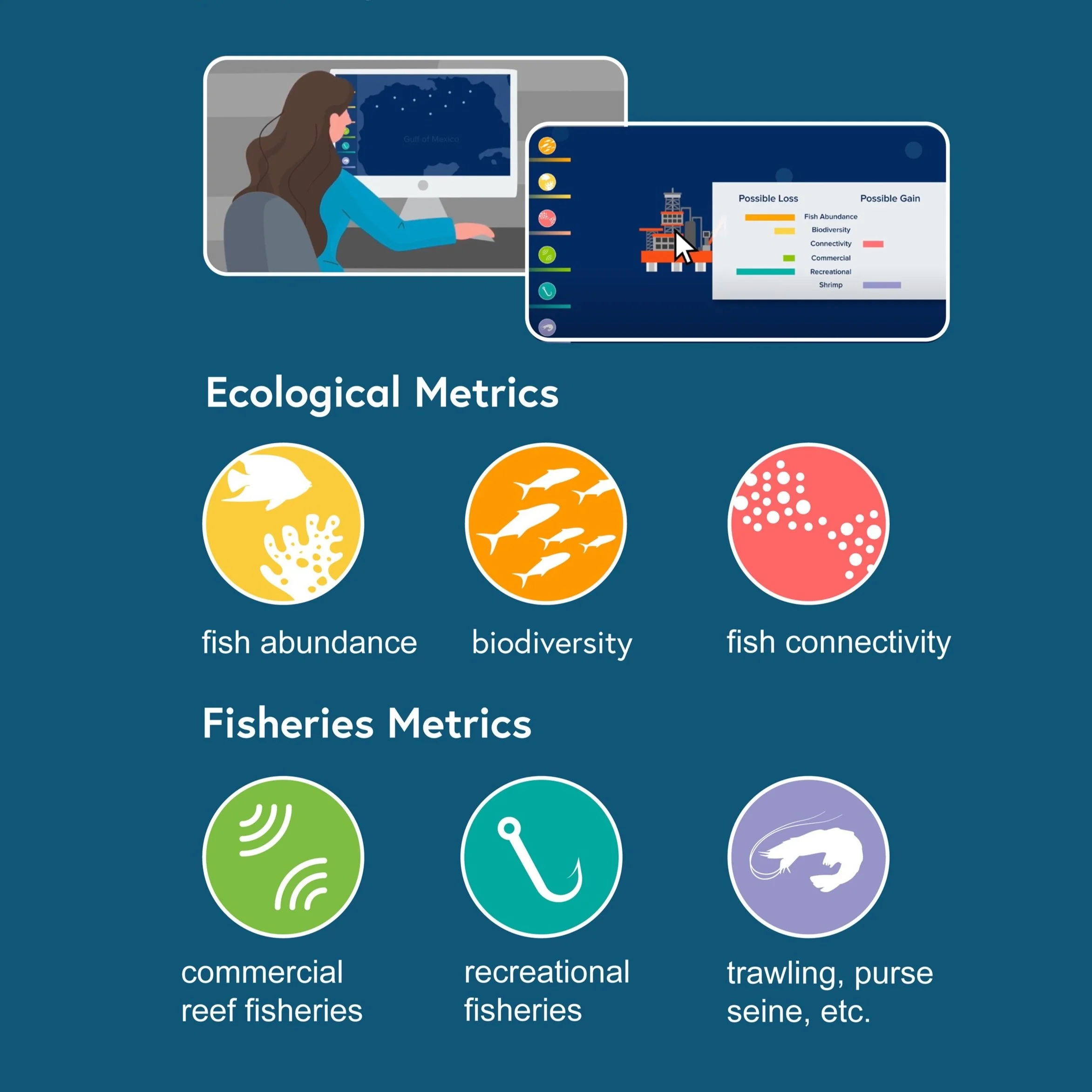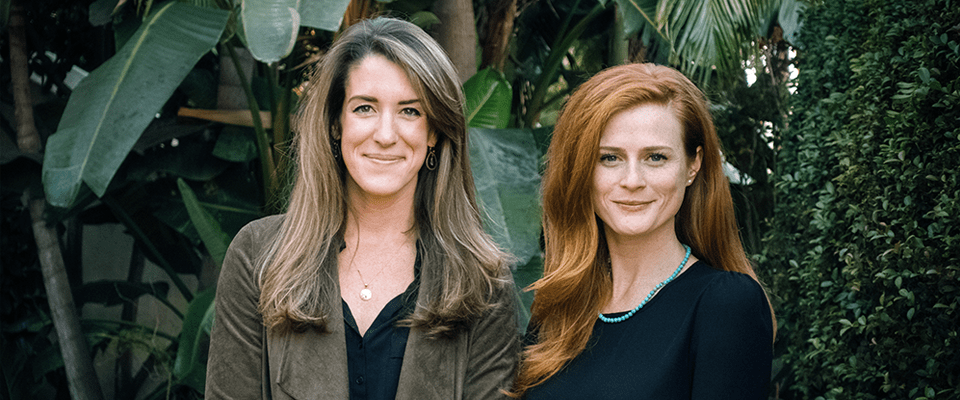From Rigs to Reefs - Repurposing Offshore Platforms in the Blue Economy: Amber Sparks from FishLAT
With the decommissioning of thousands of aging offshore oil and gas platforms imminent, the question remains: what do we do with them? One female-owned startup has developed a tool to predict exactly that, putting data in the hands of decision-makers to choose the best outcome for the ocean and Blue Economy.
For Episode Two of our Pitchfest 2022 Series on the Ocean Impact Podcast, we chatted to Blue Latitudes Co-Founder Amber Sparks about FishLAT - a spatial planning tool that can predict how the removal, reefing, or installation of an offshore energy structure could impact fisheries and marine ecosystems.
Blue Latitudes designs sustainable, creative, and cost-effective solutions for environmental issues surrounding the offshore energy industry. Finding “silver linings” at the intersection of industry and the environment.
The US-based marine environmental consulting firm was celebrated as a finalist in The Ocean Impact Pitchfest 2022 for their solution FishLAT, which won the Monitoring Spotlight Award presented by Dicker Data.
Pictured: Ben Johnson (General Manager - Marketing & Strategy, ANZ - Dicker Data) presenting the Monitoring Spotlight Award at INNOVOCEAN, and accepting on behalf of Blue Latitudes.
Shocking though it may seem, beneath the imposing metal structures of some oil and gas rigs lies quietly thriving underwater worlds. Entire ecosystems of marine life that call it home. In our conversation, Amber Sparks recalled her first time diving on one of these structures, and being struck by the beauty of the marine environment there…
“we [SAW] scallops and anemones, schools of Jack Mackerel, the Garibaldi that are bright orange and they nest and make their permanent home on these platforms. So it was truly an incredible diving experience and I've been been hooked ever since”
Why is Decommissioning oil and gas platforms problematic?
Across the globe, thousands of aging oil and gas structures are nearing end-of-life. As the blue economy shifts away from oil and gas, and towards more renewable energy resources, the decommissioning of these offshore platforms is imminent.
Surely it’s better to take them all out of the ocean?
Not always. It’s complicated.
As mentioned above, in some cases, the complex structures of beams and crossbeams have been secretly developing into the perfect artificial reef for some marine life. Amber says that some structures can be as tall as the Empire State Building and teeming with life, so simply pulling them out could have unknown implications for fisheries and the marine ecosystems that have developed on and around them. It’s also incredibly difficult and costly to completely remove them, with little-to-no money flowing back into the ocean at the end of the process.
And a diverse range of experts agree that key questions need to be researched in order to make better decisions regarding decommissioning. More on that below.
GLOBAL HORIZON SCAN SUGGESTS 10 research questions to inform decision-making
A global horizon scan was undertaken recently on the issue of offshore decommissioning, with input from an interdisciplinary cohort of 35 global experts. They developed the top ten priority research needs to help inform decommissioning decisions and advance the understanding of their potential impacts:
Assess impacts of contaminants and their acceptable environmental limits to reduce potential for ecological harm
Define risk and acceptability thresholds in policy and governance
Establish liability for ongoing cost, safety, responsibility, etc
Quantify impacts and benefits to ecosystem services
Quantify ecological connectivity between structures
Assess fish, invertebrate, and megafauna productivity and enhancement
Determine the feasibility of reuse and repurposing of infrastructure
Identify stakeholder awareness, views, and values
Quantify greenhouse gas emissions for decommissioning scenarios
Develop a transdisciplinary decommissioning decision-making process
Peter Macreadie from Deakin University’s Blue Carbon Lab breaks down the issue and methodology for those outside of academia in this video.
He talks about how ‘reefing’ these structures may be considered or allowed when potential impact on the environment, society, technical feasibility, economy, and future asset liability are considered. And how in some cases, there are concerns that removing the structures could have net negative impact on the marine life they support.
What are the advantages of REPURPOSING offshore structures into artificial reefs?
There are benefits for Planet Ocean and the Blue Economy when it some to turning offshore structures into artificial reefs:
Some of the highest densities of fish in the world have been recorded on oil and gas structures - higher than coral reefs or seagrass meadows.
They are inaccessible to trawling, acting somewhat like a Marine Protected Area (MPA), and can provide shelter for some rare and threatened species.
They also enhance fisheries and can create economic opportunities like commercial fishing, recreational fishing, eco-tourism, and diving hotspots. Examples include a dive resort based on a repurposed former oil rig in Borneo, Malaysia.
Brings biodiversity to areas unable to support natural reef. Such as in parts of the Gulf of Mexico, where natural conditions offer an unfavourable environment for coral reefs to form.
It can save on greenhouse gas (GHG) emissions that otherwise would be expended transporting and disposing of the structure.
Money can flow back to the ocean. According to Amber, the Rigs-to-Reefs program in the US results in about a 50% saving on decommissioning costs for oil companies, but those savings are split between them and the state. The state’s portion goes into an endowment for marine preservation and conservation. In California, the oil companies retain only 20% of their saved costs and 80% goes to the state, into the endowment.
Enter FishLAT
There are already federal assessments required for developing or removing offshore oil and gas structures, but they do not incorporate site-specific fisheries metrics: Blue Latitudes aims to fill this gap.
FishLAT helps ocean managers predict how the site-specific removal or reefing of an offshore energy structure will impact fisheries and the marine environment. The viability of reefing is assessed on a case-by-case basis, accounting for the location, the type of structure, and the surrounding environment.
As Amber says in the episode, “the base of the Mississippi River, where there's a tonne of sedimentation, that's not going to be a great place for an artificial reef and therefore that platform should be completely removed.”
But the team at Blue Latitudes aren't stopping with just oil and gas infrastructure.
FishLAT can also predict how the future development, siting, and installation of offshore renewable energy structures such as wind energy will impact marine activity and fisheries resources. And the team are looking to expand the tool into other areas outside the Gulf of Mexico, and to other applications - such as aquaculture - in future.
In fact, Blue Latitudes predict that the combination of offshore renewable energy and aquaculture could improve biodiversity, create jobs, increase food security, as well as reduce our reliance of fossil fuels. Amber’s Co-Founder, Emily Hazelwood, gives examples of this in her TEDx Talk.
Making Social impact for ocean impact
FishLAT has provided outreach opportunities with social impact
Like many awesome ocean impact startups, the broader impacts of FishLAT shifts Blue Latitudes focus from fish to people. Specifically, formerly incarcerated citizens who’ve re-entered a technology-centered society without the skills to integrate. Working with Louisiana Parole Project, they teach formerly incarcerated citizens how to use computers to process data. Participants help review underwater ROV video to document the presence of important fishes beneath the platforms, and gain valuable life skills, work experience, and a laptop.
Advice for Ocean Impact STARTUPs
Blue Latitudes Co-founders Emily Hazelwood and Amber Sparks
With plenty of emerging oceanpreneurs and ocean impact innovators listening to the Ocean Impact Podcast, we asked Amber for any key learnings she’d like to share. Her response was brilliant.
Reach across the aisle
“Some of the best advice that I've ever gotten…is just to not be afraid to reach across the aisle and work with non-traditional organisations or groups. Maybe those that are typically either anti-ocean conservation or maybe have a stigma around them as not being interested in conserving the ocean. What I found is that through opening up the door and having conversations with groups like that, there really are opportunities for change, and business opportunities, and it can really provide a fruitful path forward to work together and bring in these groups to make a difference in protecting our oceans.”
Consider your structure
“We started Blue Latitudes as an LLC for-profit company…because starting a non-profit foundation is incredibly challenging…and eventually we were able to develop the consulting services and really the business plan to keep us afloat, while at the same time we were applying for grants and seeking sort of non-profit donations and things like that through a fiscal partnership with Dr Sylvia Earle's non-profit, Mission Blue. For the first three years of our company, we did have a couple of small consulting jobs but we were really almost functioning as this non-profit under Sylvia Earl's umbrella. And that fiscal partnership was really valuable for us, it helped us to meet a lot of great connections, we were able to get some of our biggest funders behind us like Patagonia and a few others that really were supporting us in the beginning. And then by the time 2018 rolled around, we kind of had enough momentum to form our own non-profit, so we created the Blue Latitudes Foundation which runs in parallel with our consulting firm.”
Listen and Watch
New episodes of the Pitchfest 2022 Series will be releasing each week. Follow the Ocean Impact Podcast wherever you get your podcasts, or subscribe and watch on Youtube.










